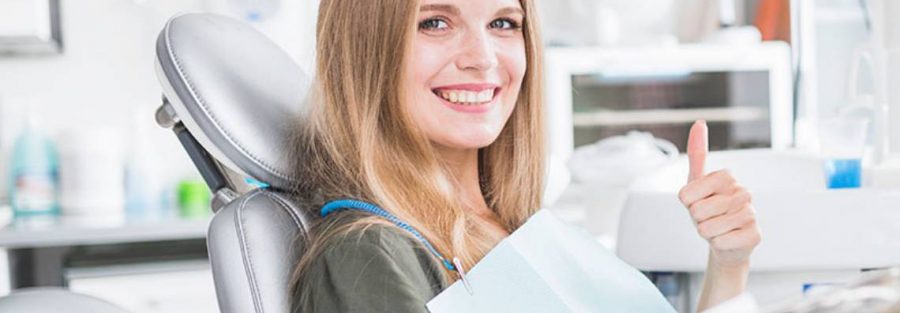Patient Safety
Adverse events such as sentinel events require a holistic review to reduce healthcare errors and improve patient safety. Adverse events occur every day in healthcare settings resulting in injuries to thousands of people each year. Home care cannot control these events. Reduced ability to engage in double checks, lack of coordination of care, communication and staff supervision, as well as heightened reliance on family and patient cooperation and lack of care environment, are unique situations to home care which trigger serious adverse events. As defined by the Joint Commission, some adverse events may rise to the level of sentinel events. A sentinel event is defined as is defined as an unanticipated occurrence involving serious psychological or physical injury. The sentinel event may not be associated with the patient’s underlying condition or illness (Brenda & Gale, 2013). The purpose of this paper is to explore a safety issue which occurred to a patient resulting to sentinel event, current research on this area, initiatives to correct this issue, discipline to take the lead in addressing the safety issue.
Detailed Explanation of the Safety Issue-Retained Foreign Body
A seventy-five-year-old female patient was readmitted to the clinic with delayed wound closure and post abdominal removal of a large seroma. The patient had been initiated with negative pressure wound therapy which was replaced with wet-dry dressing before the patient was discharged. When the patient was admitted to homecare, negative pressure wound therapy was reinitiated one of her nurses. However, there was no follow-up contact with the hospital staff, and the information on packing count was not availed to the agency (Brenda & Gale, 2013).
Later in the day, the bedside nurse received complaints from the patient that the negative pressure wound therapy was not operational. The nurse resulted the therapy was defective and packed wet to dry awaiting delivery of new negative pressure wound therapy device. As per the electronic health record (EHR), the wound was packed with six gauze pads and topped with three gauze pads. Four large abdominal gauze pads were secured with tape in the course of the interim. The packing placed, packing count removed and the dressing description was recorded in the clinical chart (Brenda & Gale, 2013).
After one week, another nurse removed and counted seven pieces of gauze and covered the wound with black foam, packaged it with a white form and initiated a new therapy device without documentation of packing reconciliation. The pieces of gauze removed did not reunite with the earlier note and went undetected. The patient began receiving home visits three days a week once the therapy device was in place.
After 11 days, the first nurse removed the negative pressure wound therapy dressing including white and black foam, and one gauze pad was found in the wound bed. With the use of a Q-tip and a flashlight to visualize the deep wound, the nurse made a thorough examination of the wound bed. The patient complained of increasing pain and temperature. Immediately the nurse reported the findings to the surgeon and the supervisor. The homecare nurse accompanied the patient to the surgeon’s office for further wound examination. In response to a positive wound culture, the patient was put on antibiotics (Brenda & Gale, 2013). The sentinel event, in this case, included a retained foreign body which warranted an immediate root cause analysis.
Current Research on Proper Removal of Wound Dressings
Regardless of the surgical settings, some effective strategies remain universal. The Association for Professionals in Infection Control (APIC) offers clear recommendations about wound management. The position statement on wound management of chronic wounds is unique in the sense that it addressed several controversies including definitions of “sterile” vs “clean”. Clean technique is intended to reduce the risk of transmission of microorganism from one position to another or from one person to another or to reduce the overall number of microorganisms. Proper removal wound dressings of wound dressing should also be taken into consideration to avoid retention of foreign materials in deep wounds. Sterile techniques are intended to maintain areas and objects free from microorganisms as possible.
Initiatives put into place to prevent future issues
Various initiatives need to be put in place to prevent future occurrence of this issues. For instance, standardizing the process for documenting wound packing wound help to prevent this issues. Avoiding multiple dressing and availing Kerlix for a single length of packing of wounds will be available will help to prevent future safety issue. Besides, integrating consistent reconciling counts among staff will help in preventing retained foreign body in wounds. Consistent wound evaluation with high-quality lighting will help proper removal of wound dressings.
Also Read: Nursing Writing Services
Discipline in which this precaution emerged
This precaution is likely to emerge in the nursing discipline. This sentinel event occurred in a nursing setting. The nursing team consisted of staff nurse representatives, supervisor, wound ostomy continence nurse, risk manager as the facilitator, medical advisor as the champion, and agency’s chief nursing officer as a leader. Members were selected to offer expert solutions to this scenario. The involvement of chief nursing officer was essential in making an informed decision. The team started the investigation by finding out what transpired from document review and interviews. A prompt action reaches to create alert to staff regarding the significance of following procedures to documentation and reconciliation. It is essential that staff are alerted to reduce the possibility of relapse even during an examination. The team designed an empathy chart to ascertain contributing factors and possible causes of this safety issue.
Research Evidence on Nursing Documentation
Nursing documentation is a key aspect to safe, effective, and high-quality studies. Prospective studies on nursing documentation practices indicate that EHRs are not yet standardized nationally and internationally. A unified national model for documenting patient care improves the flow of information in nursing research, management, and development towards evidence-based nursing care. The accuracy and quality of nursing documentation require evaluation and follow up. According to Tuti et al. (2016), the auditing process suggests that proper documentation fulfils nurses’ expectations of providing healthcare hence facilitating their important documentation duty.
Recommendations for Proper Documentations
Establishing provider education at the classroom level can help to improve documentation. Nursing education needs to be up to date and has to change how clinical decisions are taught. Health information technology must be integrated into teaching. Having a dedicated and well-staffed team of physicians to take on the task of tooling the EHR to perform better is essential. To identify a potential documentation issue, it is important to focus on measurable procedures. Documentation should point the need of the procedure logically. Also, documentation should describe a given procedure adequately and should describe a procedure properly to track the outcomes (Tuti et al. 2016).
Impact of Poor Documentation
Medical record completion is not a new problem in healthcare settings. Over the last three decades, healthcare professionals have treated the completion of healthcare records as having obvious and little medical record completion. However, in the current healthcare system, the outcomes for allowing incomplete healthcare records are substantial. Besides, causing the healthcare facility to face significant opportunity cost for offering unbillable care, incomplete records cause hospital care. Incomplete healthcare record contains gaps in reflecting poor clinical care and demonstrates that care was incomplete. It is used to support allegations of negligence, demonstrates non-adherence with organizational policies and is used to support the allegation of fraud. Lack of complete documentation has legal consequences. It can cause the organization to lose its operating license, cause a loss in revenue, contribute to the inaccurate statistical database, and lead to poor patient care by other healthcare practitioners. It is therefore important for every organization to ensure complete and accurate clinical documentation at any cost. Inaccurate documentation makes researchers unable to carry outpatient-related studies. It also compromises patient care due to nurses’ inaccurate/inaccurate clinical chart and gross revenue is reduced (Tuti et al. 2016).
Medical records are a key to good patient care and are paramount to the continuity of care. A medical record serves as the main communication tool between nurses and other healthcare providers. It also serves as a legal document which must withstand scrutiny. Good communication in a medical record is objective, accurate, and is completed at the time of contact with the patient. This means that accurate and complete information is recorded and the information is factual. Good documentation demonstrates physicians thought processes (Tuti et al. 2016).



